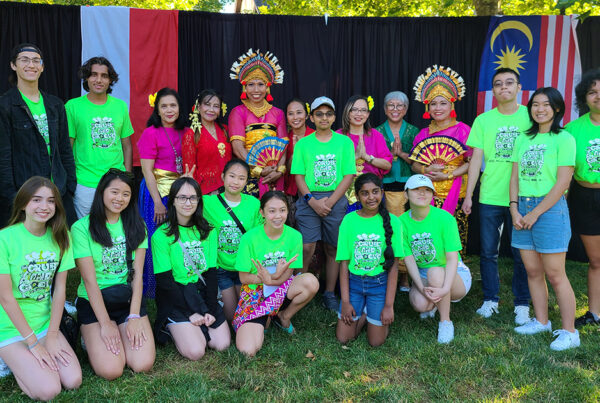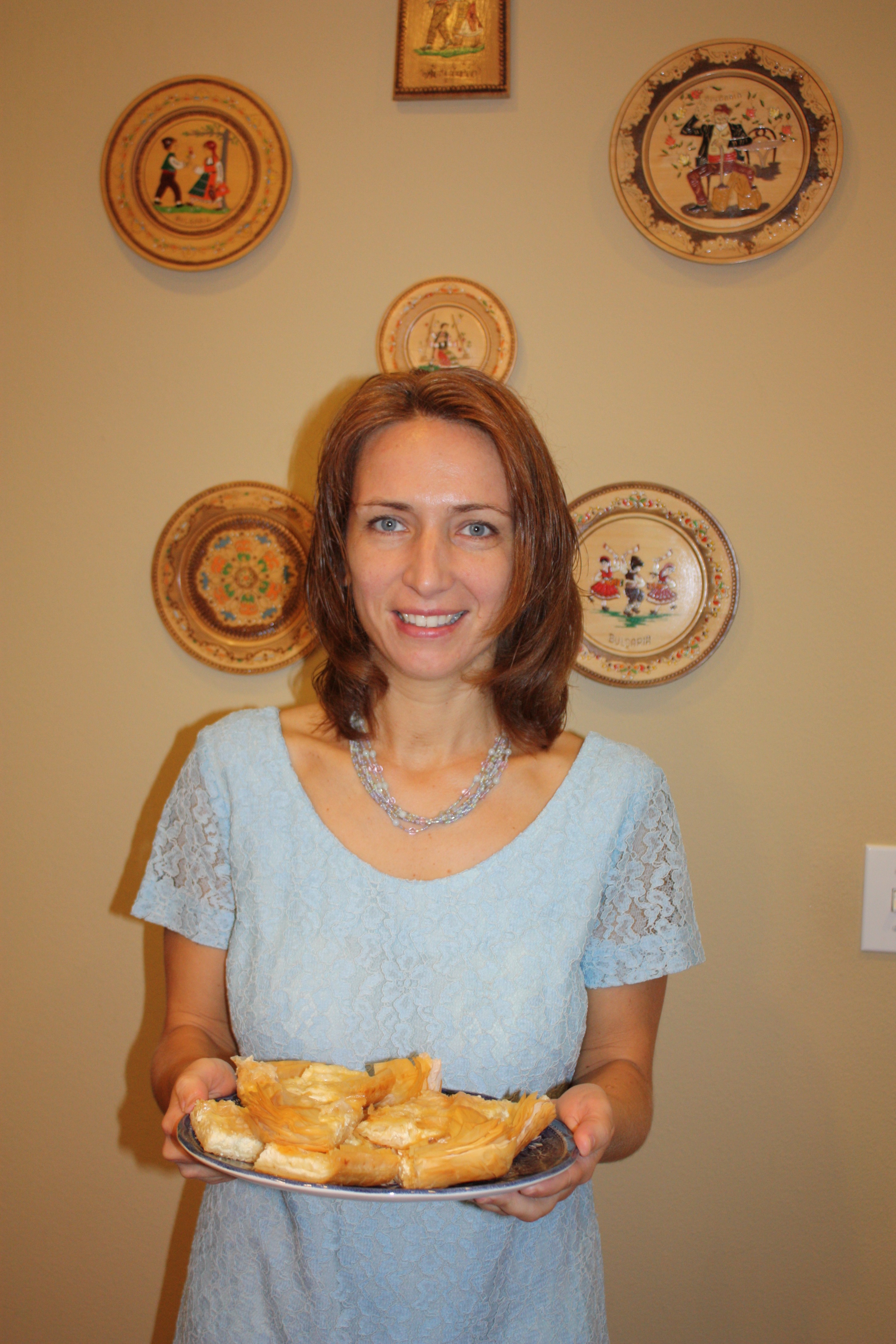
Culture Through Cuisine – Bulgaria
By Kimberly Collette, Central Park
Adriana Stamenova left Bulgaria in 1992 to do her undergrad studies at the University of Minnesota. She was very homesick, but her parents encouraged her to stay. “They told me to give it a year. If I still did not like it then I could come home,” she said.
Adriana stuck it out. And went on to earn her MBA. She met her husband, Sasha, and they lived in Minnesota, along with their two daughters, Angelina and Anna until November 2014. Adriana considers both Bulgaria and Minnesota as home and she’s learning to love her new home here in the Issaquah Highlands.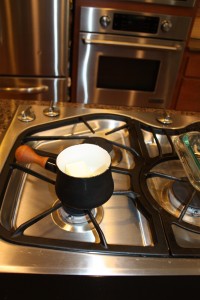
Adriana cooks mostly Bulgarian dishes. Bulgarian cuisine is a combination of influences of many of the surrounding areas. Dishes use the best tastes and flavors from Romania, Serbia, Macedonia and Greece.
Salads are simple with cucumber, fresh onion and tomatoes. Similar to a Greek salad but with a Bulgarian twist of added roasted peppers. Beet salads are popular as well as green salads with radish. All salads are simply dressed with oil, vinegar and salt.
Soup is eaten often for dinner. Vegetable soups as well as cream-based ones. Bulgarians eat lots of vegetables and enjoy meats, too. Dishes are seasoned with cumin, dill, parsley and black and red pepper.
Dinner is always ended with a serving of yogurt.
Banitsas are the fast food of Bulgaria. Banitsa shops are on every corner serving banistas of all variations. In between the paper thin sheets of phyllo dough there may be leeks, spinach, a combination of meat and mushroom. It may be sweetened with milk, vanilla and sugar or filled with shredded apples and topped with a German strudel.Banitsas are the fast food of Bulgaria. Banitsa shops are on every corner serving banistas of all variations. In between the paper thin sheets of phyllo dough there may be leeks, spinach, a combination of meat and mushroom. It may be sweetened with milk, vanilla and sugar or filled with shredded apples and topped with a German strudel.
The most traditional recipe includes feta cheese that has been mixed with eggs and yogurt. Adriana will make this for her family for breakfast at least once a week and sometimes as an after school snack.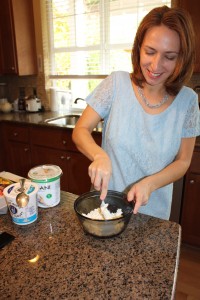
The trick is the soak the brick of feta in water for about four hours. This will draw out the salt so your banitsa isn’t too salty. American yogurt is watery so Adriana likes to mix half greek yogurt and half regular plain yogurt. She buys her phyllo dough from the grocery store freezer aisle.
Banitsa is served with coffee or tea and always a little more yogurt on the side. It is butter and creamy. On New Year’s Eve it is baked with fortunes inside. Small papers with good fortunes and happy thoughts are rolled and tied with a special red string that symbolizes health are hid in the banitsa.
Adriana’s mom taught her to make banitsa. Her mom always cooked and cooked everything from scratch. Even as a working mother Adriana’s mother would stay up late at night after work making soups to heat up for the next day.
In Bulgaria food is hospitality. When someone comes over “you go above and beyond.” There are appetizers and desserts. Prepping takes hours. While her mother was visiting, men hired to fix a fence were in the yard. Her mother asked, “Aren’t you going to make them lunch? At least offer coffee!”
Here is the recipe for the BANITSA:
Adriana explains, “The most traditional way to eat banitsa is not only with plain yogurt but also while drinking BOZA. You can’t buy BOZA in the USA but it is a BOZA is a popular fermented beverage in Bulgaria. It is a malt drink made from wheat or millet. It’s brown and thick. The flavor is slightly acidic sweet with less than 1% alcohol.”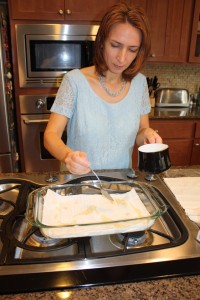
Ingredients:
1/2 lb feta cheese
2 eggs
6 tbsp of plain yogurt (preferrably: half strained, half regular)
1 stick of butter (4oz) – melted
1 pkg of filo dough (8oz or 1/2 lb)
Preparation:
Put the feta cheese in a bowl with cold water for 4 hrs so that some of the salt gets released. Then, drain the water and crumble the cheese with a fork. Add the eggs and mix well with a spoon. Then add the yogurt and continue mixing. Set aside.
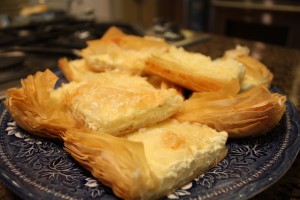 On a baking pan, put some of the melted butter and start layering filo dough. Layer 2 sheets, add a table spoon of melted butter, layer 2 sheets, sprinkle some butter, and so on. When you use up 1/2 of the filo dough, put 1/2 of the feta cheese mixture (spread evenly across). Then, continue layering 2 sheets of filo dough and butter like before, until you use up another 1/2 of the half of filo dough that’s left (in other words, 1/4 of all the filo dough that you originally started with). Then, spread the remaining feta cheese mixture.
On a baking pan, put some of the melted butter and start layering filo dough. Layer 2 sheets, add a table spoon of melted butter, layer 2 sheets, sprinkle some butter, and so on. When you use up 1/2 of the filo dough, put 1/2 of the feta cheese mixture (spread evenly across). Then, continue layering 2 sheets of filo dough and butter like before, until you use up another 1/2 of the half of filo dough that’s left (in other words, 1/4 of all the filo dough that you originally started with). Then, spread the remaining feta cheese mixture.
Continue layering filo dough with butter like before. Finish the last layer of filo dough with generous sprinkling of butter.
Bake in the oven at 325F for 30 min. Let it cool for 10-15 min before serving. Serve warm with tea, coffee or best – with a cup of plain yogurt (and BOZA if you can get it!).




